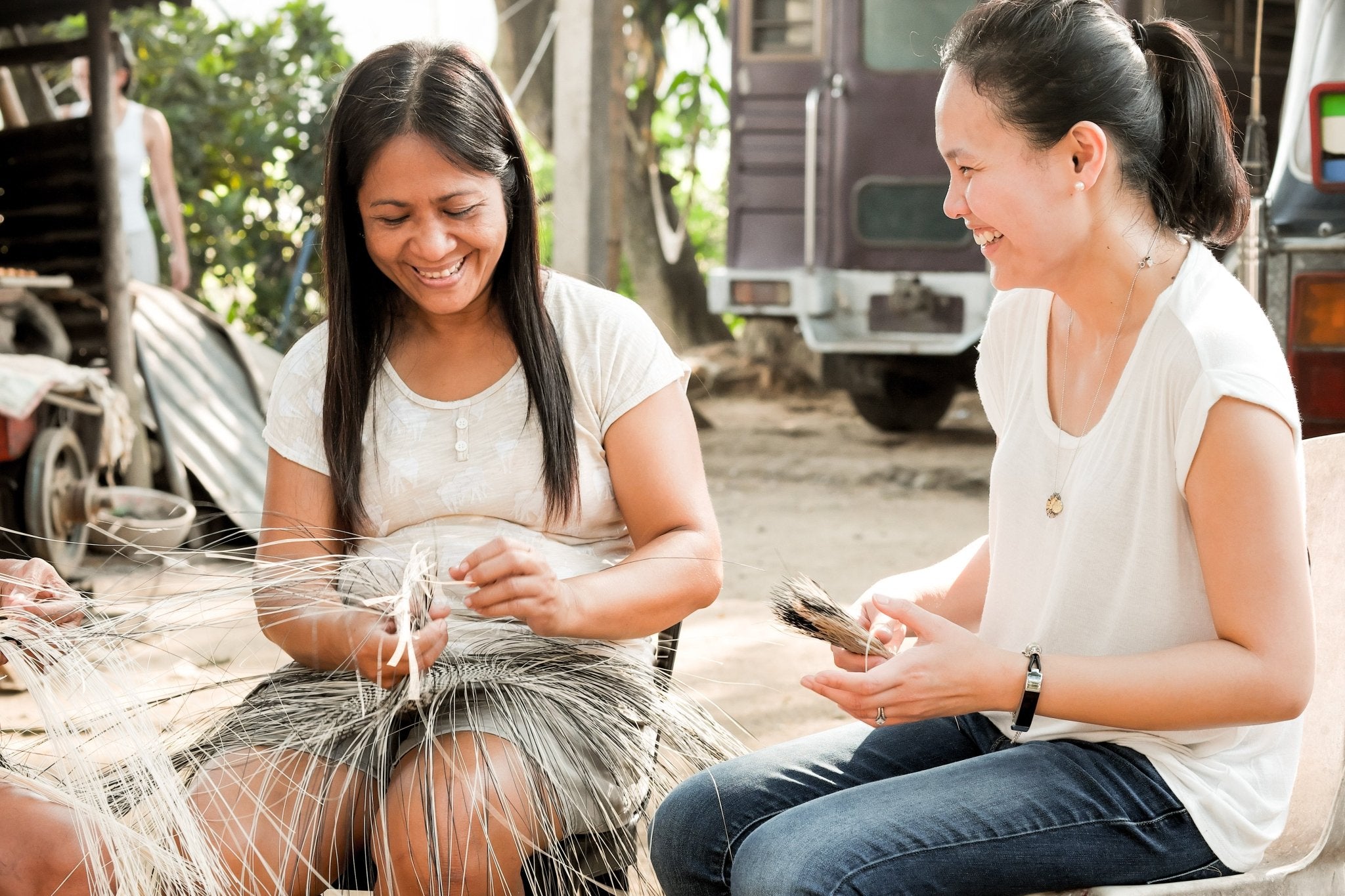Written by Miller Center for Social Entrepreneurship
Impact measurement and management is – or should be – central to the challenging work that social entrepreneurs undertake every day to solve the world’s most complex problems. Raising capital, improving outcomes, and keeping employees motivated are among its many benefits. And, as Miller Center for Social Entrepreneurship Executive Mentor Cynthia Dai explains, “Social enterprises are impact-first organizations. So, if anything, they should be better at measuring impact than they are measuring profit.”
In the second of Miller Center’s series on our customized training, today we’re spotlighting Impact Measurement & Management (IMM) as part of our initiative with Chevron that supports Asia-Pacific enterprises that have the potential to grow and scale their social economic impact. This program provides a suite of entrepreneurial services, including capacity and leadership development, training and mentoring, and investment readiness and facilitation.

We interviewed Cynthia, as well as Nathalie Llorente-Lim, founder of LIKHÂ, a Miller Center social enterprise alum based in the Philippines, whose mission is to empower Filipino artisan families to overcome poverty by reimaging time-honored local craft for the global market. Cynthia was Nathalie’s mentor during Nathalie’s participation in the Miller Center IMM short course.
So, what exactly is Impact Measurement and Management? “In our view, IMM enables organizations to account for their social performance, value their contribution to society, and understand their impact with stakeholders,” said Karen Runde, director of alumni programs, Miller Center for Social Entrepreneurship.
Miller Center for Social Entrepreneurship: Why is Impact Measurement & Management important for social entrepreneurs?
Nathalie / LIKHÂ: Impact measurement and management is at the core of what we do as social entrepreneurs. It is what grounds the vision, passion, and strategy of the business to real outcomes and results.
IMM builds empathy and gives us a more realistic and holistic impact picture. Through IMM, we understand the true dynamic of how change trickles up to our beneficiaries, our communities, and our artisans. It helps us understand what works and what doesn’t, highlights challenges, and even unearths new opportunities.
It raises all boats and standardizes outcome monitoring, making it useful across enterprises. Our results and learnings become helpful to other players in the industry, creating systemic change and economies of scale, and ultimately greater outcomes as a whole.
Cynthia: Impact measurement is helpful to galvanize employees and staff because the people who join a social enterprise are joining for intrinsic rewards as well, not just for a paycheck. For many of them, they’re part of a social enterprise because they want to make a difference, and it’s beneficial to see that they are making that difference and to know that the organization that they are part of has this discipline of making sure they are meeting the mission.
Ultimately, having impact metrics gives entrepreneurs confidence with potential investors because they can show that they are achieving their mission. If all you have are fluffy, anecdotal stories, that will only get you so far. It won’t get you to the serious money.
Miller Center for Social Entrepreneurship: What aspects of the Impact Measurement and Management program were the most critical to LIKHÂ and how did it impact your business?
Nathalie: It was important for us to refine our Theory of Change, which helped us identify how we wanted to measure and communicate our impact to stakeholders. We feel our Theory of Change is now so much more grounded in the actual dynamics operating in our communities. We have systems in place that help us track our impact across the value chain, giving us confidence that we’re focusing on the right things that enrich our artisans’ lives and improve their well-being.
Our mentor, Cynthia Dai, was extremely helpful in guiding us through the process of refining our Theory of Change, defining our metrics, and identifying the most effective measurement methods and tools.
Miller Center for Social Entrepreneurship: What is the biggest challenge social enterprises face when developing their Impact Measurement and Management?
Cynthia: Developing easy-to-capture, quantifiable metrics. Sometimes social enterprises just don’t have the data, and they have to figure out how to capture it. There are many cost-effective ways to do that.
LIKHÂ was a fairly early-stage social enterprise and just starting their IMM journey when Nathalie signed up for Miller Center’s IMM program. My early advice was to capture a couple of key metrics communicating they were achieving their mission, which is essentially to empower Filipino artisans and their families to overcome poverty. They wanted to capture information about families and what their lives were like.
LIKHÂ needed to prove that they were working in the region and that the population fit the demographics of who they were targeting. Because the government had that data, LIKHA could show it was working in areas that are rural and poor.
Then the question became, how are you demonstrating that you’re the ones lifting people out of poverty? That’s the challenge of attribution. We needed to illustrate that people prefer to work with LIKHÂ because the enterprise pays more. They worked with government data that showed minimum wages in the regions LIKHÂ operates, and then we could show LIKHÂ paid higher amounts; on average, 41% higher. That’s a great starting point for impact measurement.
Miller Center for Social Entrepreneurship: Was there anything about the Impact Measurement and Management program that came as a surprise to you?
Nathalie: The biggest surprise was how differently our solution ended up being from what we first imagined. The process unearthed quite a bit of nuance we did not initially anticipate – challenges from the social and cultural context our communities operate in. It became a deep exercise in empathy-building, understanding the core of the situation and creating solutions mindful of all the dimensions our work was affecting.
We also did a lot of reflection on the tradeoffs between the business and the impact side, thinking about scaling from a more sustainable perspective.
Miller Center for Social Entrepreneurship: What advice do you have for social entrepreneurs as they contemplate their own Impact Measurement and Management journey?
Cynthia: Start with your mission, sharpen it, refine it if you need to because it should draw a direct line to the impact metrics that you should be considering. And then be creative! Try to integrate the collection of relevant outputs in your business operations as much as possible. Sometimes usage statistics are already an indicator in and of themselves.
Nathalie: Stick with it. It’s a process fraught with seemingly unsolvable challenges, multiple pivots, and lots of rework. But with the right level of creativity, perseverance, and empathy, the business will be much more grounded in impact, and much better positioned to walk the talk.
Measuring and managing impact is a joint effort by the social enterprise and the community it serves. Though IMM takes time and effort, being grounded and connected with the community builds trust and credibility.



